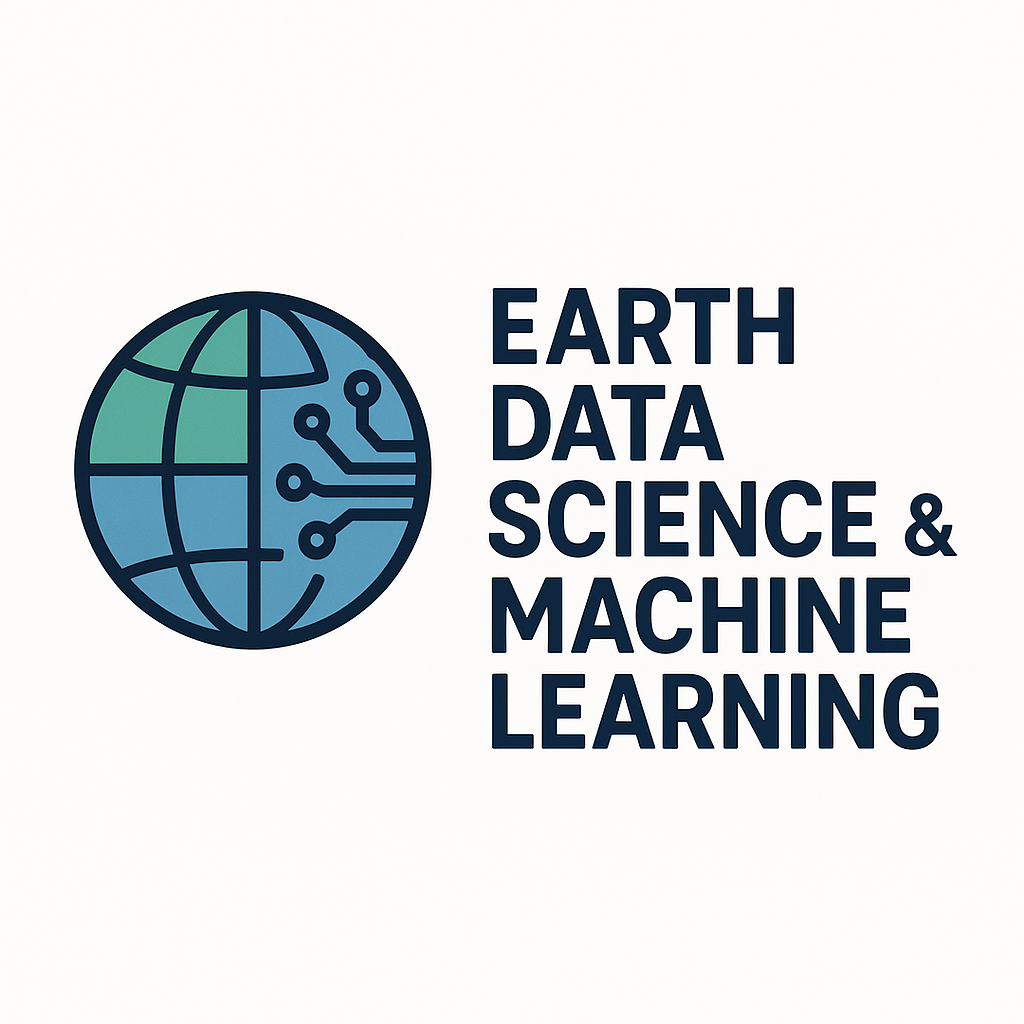Welcome to Earth Data Science and Machine Learning Course Series#
This is the online home for the first of the two summer 2025 courses:
Computing and Research Methods for Climate Data Science (CLMT5405)
Machine Learning for Climate Science and Environmental Sustainability
History and Origins of the course#
Most of the content for CLMT5405, derives from pervious versions of this course, which can be found in this online book from 2021 by Ryan Abernathey. A more recent update can be found in repo from 2024 by Yutian Wu.
Another excellent resource is available through Project Pythia.
Motivation and Scope#
Computing has become an indispensable tool for nearly all Earth and Environmental Scientists, but it doesn’t often appear in our curriculums. This material focuses on data analysis, a subset of computing in which the data already exist, e.g.from observations or from the output of a simulation, but have to be transformed into understanding. There are many different ways to gain understanding, but most workflows often boil down to:
read data files
perform some analysis operations, from very simple (e.g. take the mean) to very complex (e.g. train a deep neural network)
visualize the output in a plot
CLMT5405 doesn’t attempt to teach deep learning; its goal is to teach the basic foundations of Earth and Environmental Data Science which are often overlooked. The material is designed to be accessible for Earth Science graduate students in any discipline, with little to no prerequisites.
This material is intended to introduce new graduate students to modern computing software, programming tools and best practices that are broadly applicable to the analysis and visualization of Earth and Environmental data. This includes an introduction to Unix, version control, and basic programming in the open-source Python language. The bulk of the content is devoted to in-depth exploration of the numerical analysis and visualization packages which comprise the modern Scientific Python ecosystem, including Numpy, Scipy, Matplotlib, Pandas, Xarray, using real Earth and Environmental datasets.
Learning Goals#
After completing all of the material, students should have the ability to:
Use unix commands to work with files and directories
Navigate the JupyterHub Environment effectively
Identify common geoscience data formats and the python packages which can load them
Perform basic exploratory data analysis on Earth and Environmental data, distinguishing between
Tabular data: rows and columns
Gridded data: multidimensional numerical arrays
Use visualization to enhance interpretation of data, including maps and interactive visualizations
Construct complete, well-structured programs in Python
Practice reproducible research through version control
Course structure#
For most weeks the general idea would be to complete some lectures and one homework assignment per week. Generally, some of the weekly meeting time would consist of a lecture in which the instructor presents the week’s lecture, with students typing along. The other would be used as “collaborative time,” during which the students work on their assignments, ask questions, and interact with their peers. A final project is an important capstone experience for a semester-long course.
Policy on Use of ChatGPT and AI Tools#
In this course, we recognize that tools like ChatGPT and other AI assistants can support learning, especially in exploring new concepts, debugging code, and clarifying questions. However, it is essential that you develop your own skills and understanding.
Permitted Use:
You may use AI tools like ChatGPT for certain assignments where explicitly allowed—such as coding practice, project brainstorming, or exploratory data analysis.
When you do use AI tools, you must document how and where you used them (e.g., in a code comment or footnote). A simple statement like “Used ChatGPT to help debug the plotting code in section 2” is sufficient.
Ultimately, you are responsible for understanding and being able to explain all work you submit. If you cannot explain how a piece of code or analysis works, that is a signal to revisit the material, not rely more heavily on AI.
